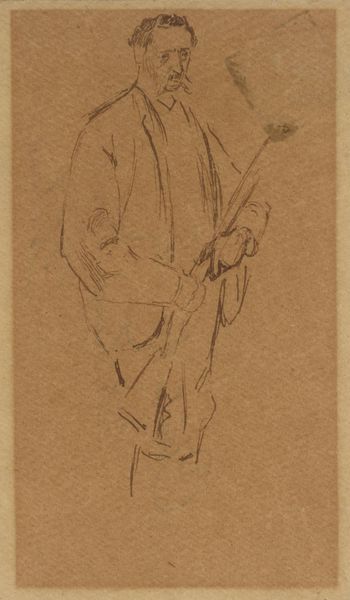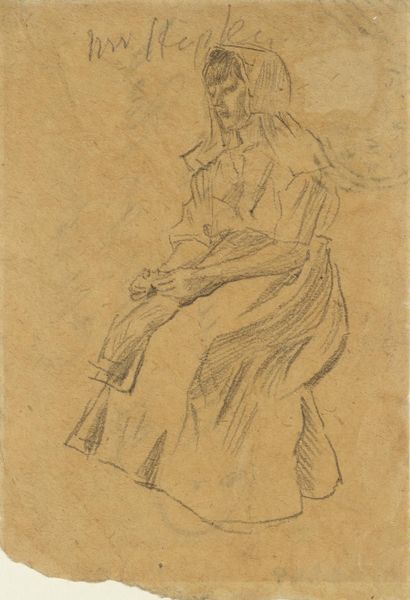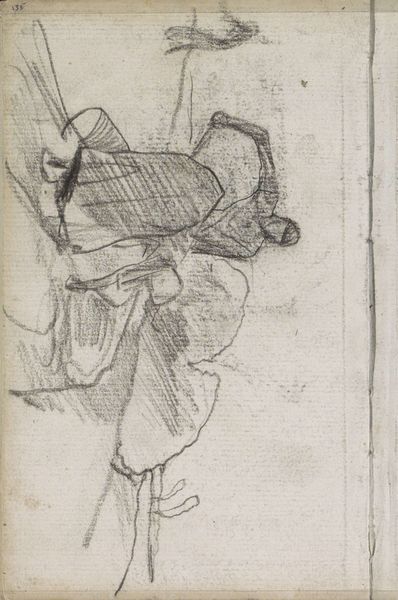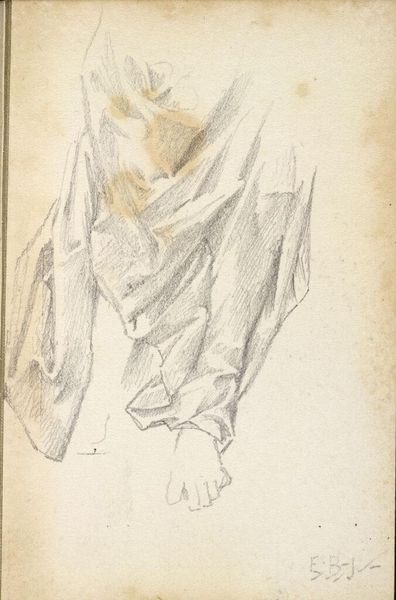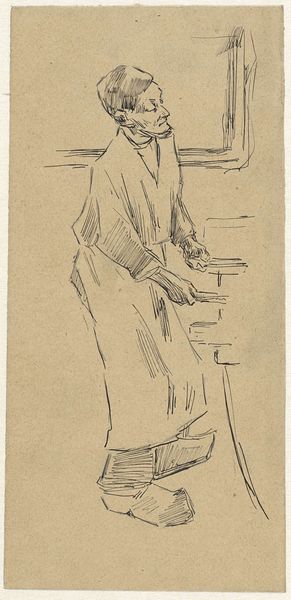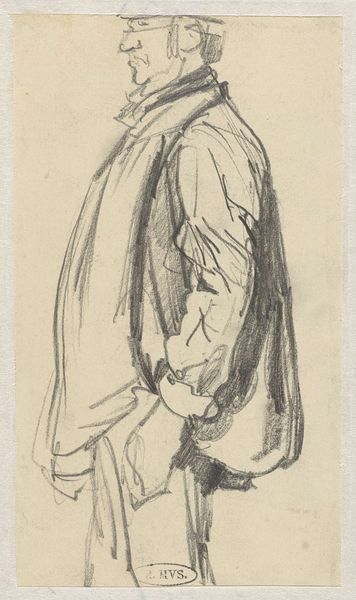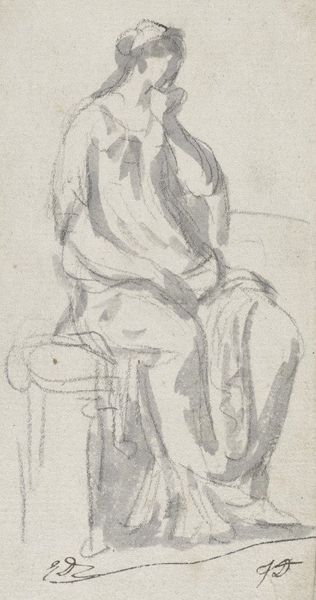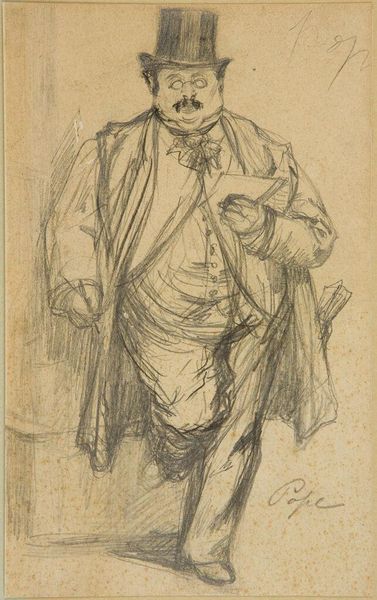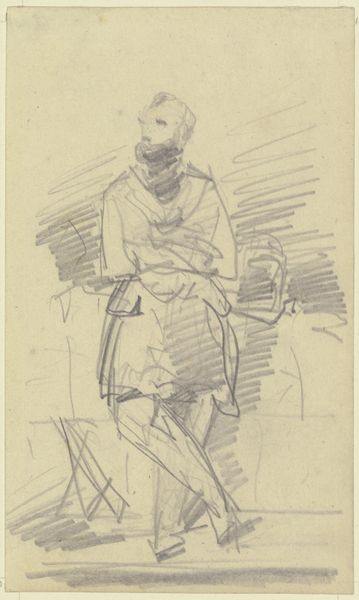
Dimensions: height 128 mm, width 78 mm
Copyright: Rijks Museum: Open Domain
Curator: Here we have George Hendrik Breitner's "Standing Woman," a pencil drawing estimated from around 1882 to 1912, part of the Rijksmuseum collection. It immediately strikes me as melancholic; the sketchiness almost heightens the subject’s isolation. Editor: Yes, that's precisely the affect, I think it stems largely from the rather economic means of production at play, and it's all in that single material, pencil, to deliver such emotional weight is so telling. You have this directness of application which brings us intimately close to the labor and making of the art. The hatch marks of the pencil itself build form, value, even her mood. Curator: True. The Rijksmuseum collection, as impressive as it is, shapes our understanding. Breitner’s association with Amsterdam’s city life likely impacted both his subject and the raw style here. Imagine the social context: late 19th, early 20th century Netherlands, industrialization, shifting social dynamics. Editor: It is about time to dig into the working classes a bit more. To really think about the politics of imagery, and what's at play in the art-world structure, is to address the societal context the female figure carries on her shoulders, one we can read between the lines and within the materiality and process the artist had to apply to construct such image. We might not see opulence here, but there is this visual construction that tells you that this image should be appreciated as high art. Curator: Certainly. The sketch might have served as a preparatory study, or was perhaps valued as the art work itself. Museums contribute a role in elevating these materials as treasured relics, as art works, which further blurs any artificial demarcation separating the "high art" and functional work in the context that it exist within today. Editor: Museums are always going to play an odd role, where cultural taste and valuation become interwoven. But considering the drawing itself and Breitner's hand in creating such imagery, I find the unedited sketch is the most truthful manifestation of his talent. Curator: Agreed. There is a definite rawness and immediacy that finished works lack sometimes, wouldn’t you say? The intimacy offered is a unique experience. Editor: Absolutely, viewing Breitner's art, the production values used in its creation helps to uncover layers beyond its visual surface and opens up rich dialogues to our visitors. Curator: A fascinating exploration! Hopefully this inspires you, the listener, to observe the societal, institutional and creative aspects inherent to the pieces displayed here at the Rijksmuseum.
Comments
No comments
Be the first to comment and join the conversation on the ultimate creative platform.
